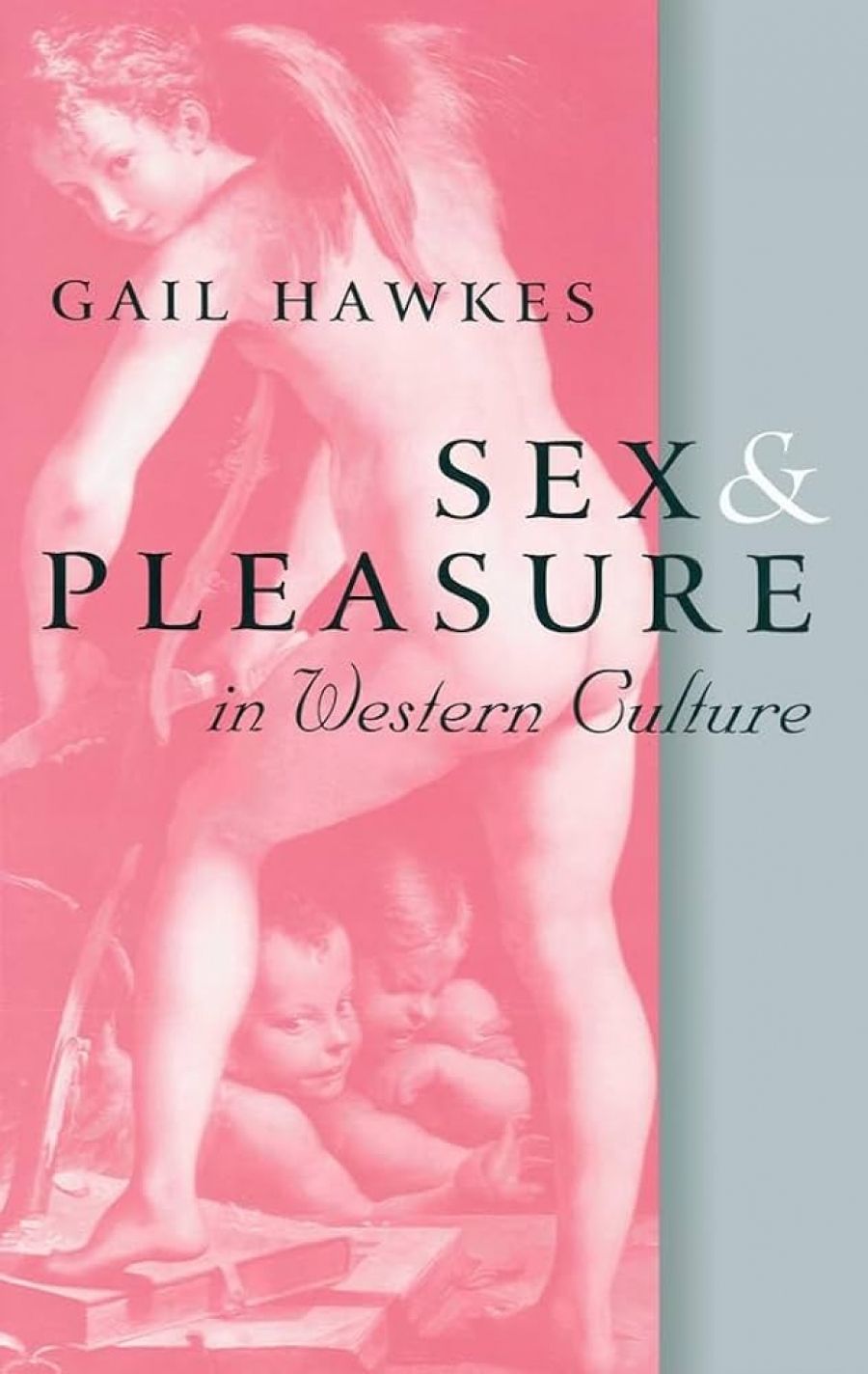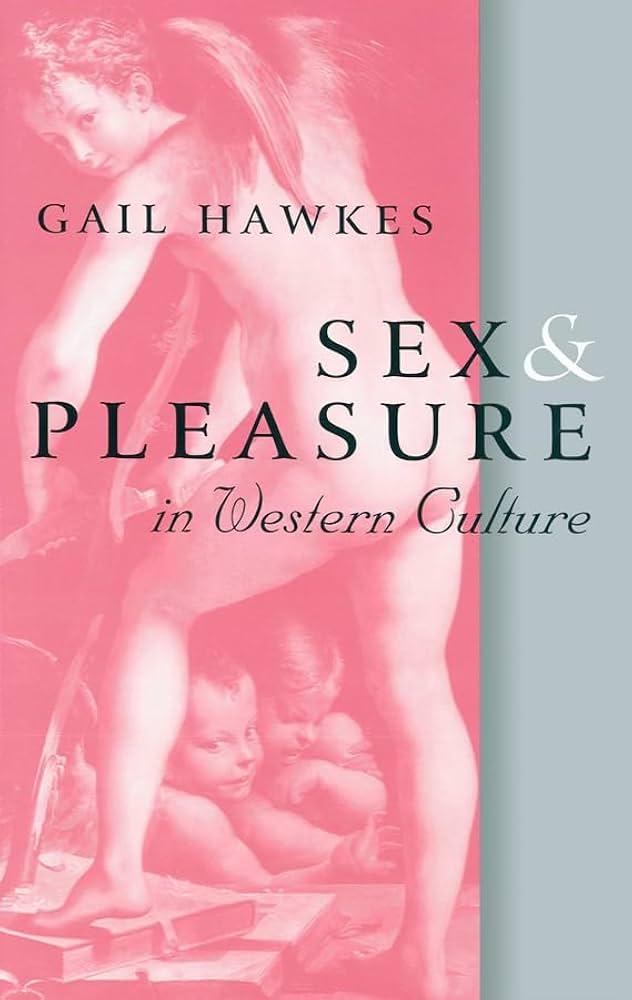
- Free Article: No
- Contents Category: Anthropology
- Review Article: Yes
- Article Title: Illusion of choice?
- Online Only: No
- Custom Highlight Text:
I should read my email more carefully. Like many, I have to admonish myself thus at regular intervals, but it doesn’t always work. This review is a case in point. When invited to review a book on ‘sex and pleasure’, this request stood out from an unread e-mail queue that was uncomfortably long. I had just published a book myself on the history of sexuality (Histories of Sexuality: Antiquity to Sexual Revolution), so the topic had appeal, but, in my haste to reply, I neglected the qualifying phrase ‘in Western Culture’. To my horror, I opened Gail Hawkes’s book only to be confronted with an immediate ethical dilemma (and given my current role as Dean of an Arts Faculty, I could do without another one). Sex and Pleasure in Western Culture covers substantially the same ground as my book: from Ancient Greece to the present day. Even some of our chapter divisions overlapped: classical antiquity; early Christianity; the medieval era; the early modern period and so on. How could I approach a review in the dispassionate way this art requires, when troubled by insidious fears that this might be a better book?
- Book 1 Title: Sex and Pleasure in Western Culture
- Book 1 Biblio: Polity, $61.95pb, 215pp, 0 7456 16712
- Book 1 Cover Small (400 x 600):

- Book 1 Cover (800 x 1200):

Despite the inevitable anxieties attendant upon reviewing something so close to one’s own work, I found much to enjoy in Sex and Pleasure. While there was considerable overlap in content – the status of kinaidos in antiquity, the ethic of renunciation within early Christianity, the body and courtly love in medieval times, the construction of sexual identity in the eighteenth century, the emergence of the sexual sciences in the nineteenth century, the proliferation of sexual domains, and the challenges to sexual conservatism in the twentieth century – there were considerable differences of emphasis and approach. This is very much a sociological text (mine more conventionally history) – ambitious in its commanding sweep over large periods of historical change, more inclined to examine key texts and thinkers in detail, and much more penetrating in terms of contemporary social theory. For Hawkes, the history of sexuality is a means to ask some big questions about the relationship of sexuality to social order. This is a framework in which to explore knotty problems concerning the interconnections between public discourses and private desires, the commodification of sex and the limits to sexual freedom.
History, for Hawkes, becomes a means of demonstrating the contingent and specific ways in which different epochs (and cultures) have regulated bodies and pleasures, constructed particular forms of identity and created the conditions in which some could contest the sexual order. Drawing on the work of Norbert Elias, Michel Foucault, feminist and queer theory in the main, Hawkes takes us on a fascinating journey through the profound changes in Western sexuality since classical antiquity. She guides readers along the way with insightful readings of texts such as Plato’s Symposium and through an admirably clear distillation of key developments in the history of sexuality and its discontents. There is much to savour here.
Historians, however, might baulk at the confidence with which Hawkes traverses the past. Where Sex and Pleasure elucidates significant historical changes clearly and succinctly, for historians that past is far more contingent, an arena of contest and dispute. For example, Hawkes characterises the nineteenth century in familiar terms as an age of prudery. But a generation of historians has been slowly dismantling this view. There were competing Victorian sexual discourses – at least four, according to Helen Lefkowitz Horowitz – and one of them was a rich vernacular tradition that promoted an ethic of sexual licence (one that Michael Mason argues shaped popular medical and hygiene discourses). Inevitably, given its broad sweep, Sex and Pleasure leaves out insights that historians might consider vital. For instance, Hawkes sees Christianity as an end to a pagan ethic of pederasty, ushering in an era of austerity and marital fidelity. Michael Rocke’s fascinating study of Renaissance Florence, however, argues that a majority of Florentine adult males were arrested at some point for consorting with young men, raising the intriguing possibility that an older culture of relationships between men and youths persisted for centuries after the arrival of Christianity.
This is not to suggest that Sex and Pleasure is seriously awry in its historical account, only that historians might complicate some of the foundations on which it is built. Nor is this meant to be a claim for the superiority of history, only that there are disciplinary differences that enrich any field of inquiry. These should not obscure deeper affinities. Despite our very different approaches, both Hawkes and I come to share a common interest in the complex problem of understanding sex now. Was the fragmentation of sexual identities in the late twentieth century a step towards the overthrow of the tyranny of sexuality, or merely an ‘illusion of choice’? The fact that we both, by very different disciplinary routes, ended up posing a similar question is both disconcerting and reassuring. It certainly means that I profited from reading Sex and Pleasure. Others will, too.


Comments powered by CComment